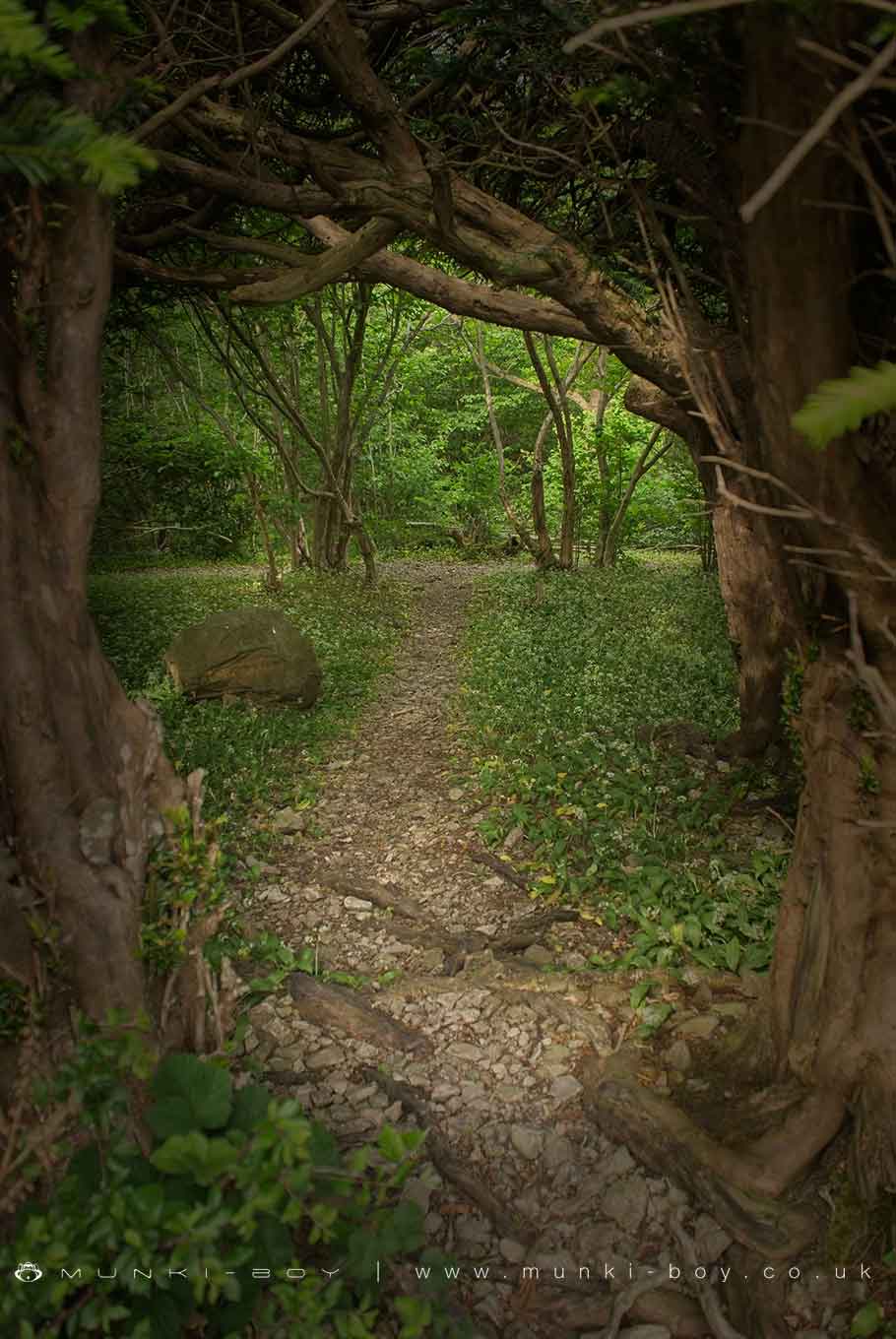
Grubbins Wood by munki-boy
Grubbins Wood
Grubbins Wood is in The Lake District National Park in England.
Woodland has probably been present at Grubbins since before mediaeval times when it would have stretched, more-or-less unbroken, from the summit of Arnside Knott to the shore. When Beachwood House was built in 1777, Grubbins Wood formed part of the grounds. It is currently owned by the Matson Ground Estate and is leased to Cumbria Wildlife Trust.
Dog’s Mercury - Warning!
Dog’s Mercury grows here, a wild plant that is poisonous to dogs.
Yew and Lime
Yew woodland, whilst common around Arnside is a rare habitat in a national and international context. Deep, year-round shade cast by the yews allows little to live beneath the canopy, but the tiny spider Hypiotes paradoxus makes its home here. Two corners of its triangular web are fastened to twigs whilst the spider holds the third. Flying insects become entangled when the spider alternately tightens then slackens the threads. The next nearest location for this species is in Staffordshire. Away from the stands of yew, deciduous trees such as oak, ash, birch and small leaved lime are more common. Because these cast a lighter shade, plants such as dog’s mercury, bluebell and violet can thrive beneath them.
Ants
Grubbins Wood is now the most northerly site for the southern wood ant Formica rufa. Until recently this species was also found in the southern Lake District but it has died out there. Wood ants build large nests of twigs and leaves, choosing locations that receive sun but are sheltered from rain. The nests can contain baout half a million worker ants and several dozen egg laying queens. During the summer they rear their larvae in the warmth of the mound, but during the winter they retreat underground. A new nest is started by a queen moving out and taking a group of workers with her.
Wood ants feed in the tree canopy on small insects and honeydew produced by aphids. If you look closely, the ants coming down the tree are fatter than those going up as they are swollen with honeydew, and are often seen carrying food items. Wood ants do not sting but they have powerful jaws and can squirt formic acid from their rear end to subdue their prey or derfend themselves from predators.
Grubbins Wood is in Arnside & Silverdale AONB, a designated Area of Outstanding Natural Beauty.
Created: 25 October 2020 Edited: 29 November 2023

Grubbins Wood
Local History around Grubbins Wood
There are some historic monuments around including:
Badger Hole, Warton CragArnside TowerHazelslack TowerDog Holes CaveCastlehead Bridge, Grange.




